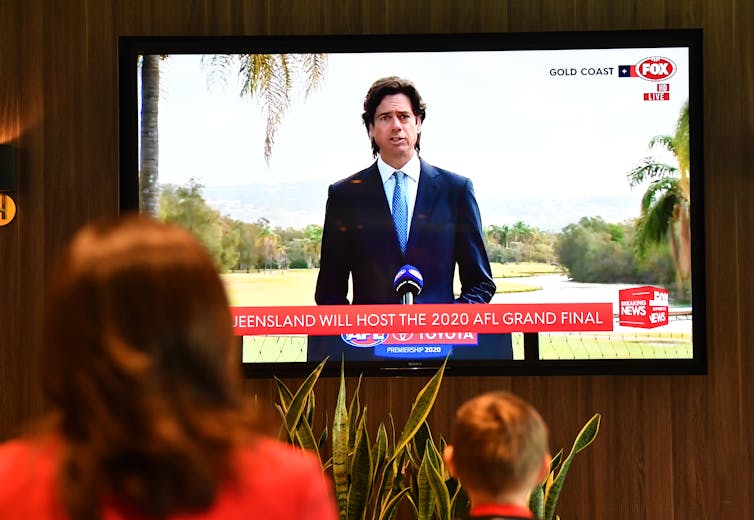Source: The Conversation (Au and NZ) – By Glenn Withers, Professor of Economics, Australian National University
The Australian Competition and Consumer Commission’s draft news media bargaining code has raised an interesting question: how to put a dollar value on news content?
Under the code, Google and Facebook would be forced to pay for Australian news published on their sites to help fund public interest journalism.
The code also proposes the establishment of a “final offer arbitration bargaining process” to negotiate the conditions of exchange between old and new media. This means the parties must bargain on the costs of publishing Australian news on the platforms, and, if an agreement cannot be reached, an arbitrator will choose the best offer.
But in a rather dramatic development, Facebook has objected strongly to this process. It says
we are left with a choice of either removing news entirely or accepting a system that lets publishers charge us for as much content as they want at a price with no clear limits. Unfortunately, no business can operate that way.
Market uncertainty in the new media landscape
To assist with a constructive bargaining process, it helps to address one fundamental part of Facebook’s position. It is worried publishers may charge as much as they want for their content. However, this doesn’t need to be the case.
The Public Interest Journalism Initiative has addressed this issue in its submission to the ACCC inquiry.
Read more: If Facebook really pulls news from its Australian sites, we’ll have a much less compelling product
We have specifically proposed greater clarity on the factors that could help determine payments within the negotiations.
As we say in the submission:
The lack of value guidance is creating significant market uncertainty — for news businesses and digital platforms alike. It also perpetuates the uneven playing field to the detriment of the news media.
The key for these “value factors” can be the appeal to the public interest. And here, this lies principally in public interest journalism: the news, public information and analysis that informs our democracy and community.
Certainly, this would benefit the news businesses and digital platforms alike, since they are both increasingly distrusted by the public. Their reputations and business positions overall would actually benefit from being seen to come together in a compact for the public good.
How to value the news
But how to put a value on this? That’s the tricky question.
PIJI proposes looking at a number of specific factors, including
-
the cost of journalism
-
the advertising dollars involved
-
the community value placed on public interest journalism.
Each can be calculated to some degree, including even the community value.
Indeed, we have researched the value the community puts on public interest journalism. In a survey of Australians conducted in April, we found 86% of people consume media on a daily basis, with commercial TV/radio being the most popular (56% daily consumption), followed by digital social (55%) and public TV/radio (49%).

Four in five respondents rated public interest journalism as either somewhat or very important. Perhaps most relevantly, over half were willing to pay more in tax if necessary to support it.
When it comes to an actual dollar value, we used these surveys to calculate that a majority of Australians are willing to pay up to $560 million per year in additional tax to support more public interest journalism.
How did we arrive at this figure? This is my own best estimate based on the amount in additional tax our respondents said they were comfortable paying to support bringing the number of journalists back up to the level it was before the 2020 rounds of job cuts and newspaper closures came into effect.
The $560 million is the midpoint of the range of responses — some respondents said they would “definitely” pay more than that, while others said they would only “probably” do so. This is the figure where we found majority support among all of these respondents.
So, using these data, we can suggest boundaries for pricing the news in negotiations with Facebook and Google.
The minimum would be the cost of maintaining the present level of journalism being produced in Australia (specifically, the editorial costs to news outlets).
To define the maximum cost, we can then use the $560 million per year figure that over half of Australians said they were willing to pay to support a higher level of public interest journalism. (The national public broadcasters were specifically excluded for separate decision by government.)
Of course, the large corporations on both sides will most likely dominate the bargaining process. Yet, Australians are also very concerned about local community and regional news providers, including traditional media and digital start-ups, so a public interest journalism fund must also be considered as part of this agreement or as a publicly funded supplement.
The positions of media outlets of all sizes must be taken into account, as well as the concerns of the community.
A baseline for negotiations
Further research and refinement may be needed. But, in the absence of other objective guidelines, this approach could certainly be used to set financial parameters for the first round of negotiations.
Facebook’s current position essentially means if it is required to pay for news through this system, it will block Australians from sharing news through its site or consider leaving Australia altogether.
Instead, what we are offering the media giants is a novel idea: use the public interest as a baseline to settle a business dispute. The public has indicated its willingness to support news as an essential service. This viewpoint should be respected as a top priority; jockeying for power and perks can take second place.
The outcome of the drafting of the code matters for Australians. As Milton Friedman once put it: there is no such thing as a free lunch. But for Australians, it is equally a matter of the future of an informed democracy.
– ref. How much should Facebook have to pay for news? We have a suggestion how to calculate it – https://theconversation.com/how-much-should-facebook-have-to-pay-for-news-we-have-a-suggestion-how-to-calculate-it-145463







